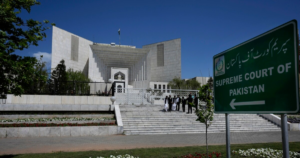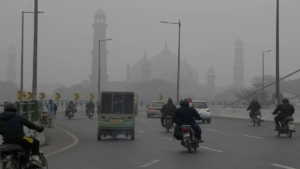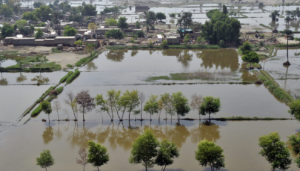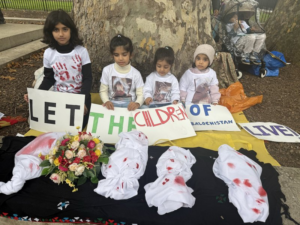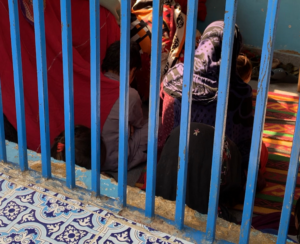
The harrowing rescue of a young man in a Bahria Town house in Rawalpindi, bound to a stretcher and moments away from having his kidney removed, should have been unimaginable in 2025.
Yet, it is a grim reality. This incident marked the second bust of its kind in the city in a single week, laying bare a terrifying truth: Pakistan’s organ trafficking industry is flourishing openly, under the very nose of the state.
Fifteen years ago, the government passed the Transplantation of Human Organs and Tissues Act (THOTA), a law designed to curb the exploitation of the poor and regulate the transplant industry.
The legislation was meant to safeguard human life, ensuring that organs could only be donated voluntarily and with proper oversight.
Fifteen years later, however, that law exists largely on paper. In practice, sophisticated organ trafficking networks operate undetected even in upscale housing societies, equipped with medical instruments, anaesthetic supplies, and qualified surgeons.
The audacity of these operations reflects not only the profitability of the illegal trade but also the glaring gaps in regulatory enforcement.
Perhaps the most shocking aspect of these incidents is the repeated involvement of medical professionals—the very individuals sworn to preserve life.
Surgeons, nurses, and anaesthetists are implicated in these crimes, transforming spaces meant for healing into sites of exploitation.
Their participation underscores a systemic failure in oversight by health authorities and regulatory bodies, whose mandate is to monitor, investigate, and prevent such abuses.
That such professionals can so blatantly participate in criminal activity suggests either an alarming level of negligence or complicity within the system.
The Human Organ Transplant Authority (HOTA) at the federal level, along with its provincial counterpart in Pakistan’s Punjab, is theoretically responsible for regulating organ transplants, vetting donors, and investigating suspicious activity.
In reality, these authorities have proved ineffective. Their inability—or perhaps unwillingness—to intervene before a crime occurs renders them little more than symbolic institutions.
Routine inspections and oversight appear to exist as formality rather than function. As a result, organ trafficking rings operate in a near-complete vacuum of accountability, relying on secrecy and exploitation of the poor to maintain operations.
Law enforcement, in turn, seems to function more as a reactive force than a proactive one.
The discovery of victims often occurs by accident rather than through actionable intelligence or systematic investigation.
In the case of the Bahria Town bust, authorities stumbled upon a victim on the verge of being mutilated, rather than preventing the crime through surveillance or investigation of known networks.
This reliance on chance encounters to uncover criminal activity highlights the profound inadequacy of both regulatory oversight and policing mechanisms.
The persistence of organ trafficking in Pakistan is indicative of deeper structural and societal issues.
The exploitation of vulnerable populations—often the poor, the uneducated, or the desperate—is facilitated by a combination of systemic corruption, regulatory failures, and societal indifference.
Poverty drives individuals into the clutches of traffickers, who promise compensation for organs, often under coercion or deception.
Once ensnared, these victims find themselves at the mercy of organised networks that operate with impunity, shielded by bureaucratic apathy and lack of enforcement.
The use of upscale housing societies like Bahria Town as venues for these crimes adds a layer of complexity and irony.
Such neighbourhoods are supposed to symbolise security, affluence, and modern governance. Instead, they have become havens for illicit medical procedures, highlighting the disconnect between perception and reality.
The fact that traffickers can operate in these environments with surgical equipment and professional personnel signals not only the audacity of these networks but also the state’s inability—or unwillingness—to impose meaningful oversight, even in areas under constant scrutiny.
The broader implications are chilling. Organ trafficking is not merely a criminal enterprise; it is a gross violation of human rights.
Each victim represents a person stripped of autonomy, dignity, and, in some cases, life itself.
That these violations occur repeatedly, with little intervention from regulatory bodies or law enforcement, reflects a profound moral and institutional failure.
The Transplantation of Human Organs and Tissues Act, intended as a safeguard, functions as a hollow promise rather than an effective deterrent.
Repeated incidents, such as the two busts in Rawalpindi within a single week, demonstrate a disturbing pattern.
These are not isolated events but symptoms of an entrenched problem. The continuation of these crimes suggests a level of normalisation, where organ trafficking can occur with regularity, and victims are rescued only when chance—or public outcry—intervenes.
It is an industry that thrives on the vulnerabilities of society, enabled by systemic incompetence and a lack of accountability.
Moreover, the involvement of medical professionals raises ethical questions that go beyond legal enforcement.
The breach of medical ethics in these cases is staggering. Physicians and surgeons are entrusted with life, yet in these trafficking operations, they are complicit in orchestrating death and mutilation for profit.
Their actions erode public trust in the healthcare system, exposing the ease with which exploitation can infiltrate institutions designed to protect life.
The failure is not limited to healthcare authorities. Law enforcement agencies, too, are caught in a reactive loop. Instead of dismantling trafficking networks through intelligence-led operations, they rely on fortuitous discoveries.
This ad hoc approach allows criminals to operate freely, confident that they are unlikely to face consequences unless their activities are inadvertently exposed.
Such systemic failure emboldens traffickers, ensuring the continuation of this underground industry.
In the absence of robust oversight, the scale of Pakistan’s organ trafficking network remains largely hidden. Incidents that reach public attention are likely just the tip of the iceberg.
The lack of comprehensive data, investigative rigour, and public accountability masks the true extent of the problem, leaving countless victims invisible.
Each successful rescue is a narrow escape rather than evidence of effective governance.
Pakistan’s organ trafficking industry represents more than a criminal phenomenon—it is a mirror reflecting the state’s persistent inability to protect its citizens from exploitation.
Laws exist but are unenforced. Regulatory bodies exist but fail to act. Medical professionals, who should be protectors of life, are implicated in atrocities. Law enforcement intervenes only by chance.
Together, these failures create an environment where illegal organ trade can flourish, unimpeded and unchecked.
Pakistan’s organ trafficking industry continues to thrive, and its growth in plain sight is a damning indictment of institutional failure. In 2025, the unthinkable has become routine, and the state’s inability to confront this reality exposes a nation where the law exists on paper but is powerless in practice.


